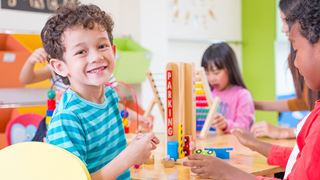What is e-safety and why is it such an important issue in education?
What is e-safety?
E-safety is a phrase that many people will have heard of but how many know what it actually means?
E-Safety at a simple level means being safe on the internet. Some people also include the safe use of technology in this as well. The pace at which technology is evolving can make it difficult to know what to include when talking about the safe use of the internet.
In schools, teachers will play an extremely important role in inspiring young people and shaping their futures, but they also have a responsibility to safeguard children’s wellbeing, in both the classroom and online. Online abuse can take shape in a number of forms including:
- Bullying/cyberbullying
- Sexual Exploitation
- Grooming
- Emotional Abuse
If you’re looking for more information on Safeguarding take a look at our range of Safeguarding courses. Click Here to view all.
Traditionally, e-safety may have been viewed as the responsibility of a school's IT department, but now with the world being so digitally dependant, teachers need to be taking e-safety for pupils into their own hands.
Teachers can do this by educating themselves thoroughly on the dangers of the internet and how to act responsibly online, before passing on this knowledge to their students.
Why e-safety is one of the biggest issues facing children today
According to statistics from Ditch the Label, 7 in 10 young people have experienced cyberbullying in some form by the time they reach 18 years old. These numbers have increased dramatically in recent years corresponding to the increasing usage of social media and the ease of access young people have to connected devices.
The advent of the internet has raised more 'stranger danger' issues than ever before, meaning awareness is key to protect children online, and this needs to start with safeguarding training.
View the safeguarding e-learning courses on offer at Virtual College to find out more.
More recently parents, teachers and childcare professionals have called on technology and social media companies to improve their platforms. The pressure has attained some recent successes including Facebook announcing it’s plans to appoint an independent oversight committee to make decisions on how the network is monitored and which posts violate it’s standards.
The BBC has taken a big step in combatting cyber-bullying by releasing a new app which monitors a young persons interactions and use AI to evaluate their mood and offer support is it detects that they might be about to send a threatening message or upsetting image.
These actions show that there is progress from external forces when it comes to protecting children and young people from cyber-bullying. However schools will still be on the front line of educating children to act responsibly online, this can only be done through teachers understanding and being able to communicate the values of e-safety to the children they come into contact with.
Protecting children's digital wellbeing
Bullying occurred in schools long before the introduction of social media, but the very nature of cyber bullying means that taunts cannot be left behind in the playground. Hurtful messages can be received at any time of day via social media, meaning online bullying can potentially have a more serious effect on children's mental health.
It is therefore vital that parents, teachers and older students (who can act as mentors to younger pupils) are able to educate children about e-safety both in the classroom and at home. know how to deal with cyber bullying and can spot the signs of online predators.
Furthermore, Ofsted has introduced checks on e-safety in education as part of its school inspections. Schools are automatically deemed inadequate if they cannot demonstrate evidence of "progressive and planned e-safety education across the curriculum".
Taking part in a safeguarding course that covers e-safety for pupils, as well as e-safety for parents, can therefore be hugely beneficial for teachers, not only to meet inspection criteria, but to protect the wellbeing of young people as they increasingly interact online.
5 tips to on how to keep children safe online
- Privacy settings- Ensure privacy setting are enabled on children’s devices and apps to give them more protection online.
- Do you know them?- Ensure that children are only accepting friend requests or speaking to people they know and trust.
- Downloading files.- Never let children download files from unknown sources and make sure they ask permission before they try to download something.
- Knowledge- Give children training to ensure they know what to do if they’re being bullied or feel threatened whilst online.
- Speak to someone- Make sure children know who they can talk to about cyber bullying or if they are unsure about something online.
E-safety Training
Being able to identify those who are potentially at risk from online abuse and how to appropriately report these concerns is vitally important for anyone with safeguarding responsibilities.
Online safeguarding training is a quick and effective method to ensure you or your employees know how to identify the signs and symptoms of abuse. Take a look at the Virtual College E-safety training course which covers e-safety for practitioners and covers key legislation to help learners apply the learning to their own workplace.
Click here to find our more information on our e-safety training
Top Safer Recruitment FAQs
What are the key Safer recruitment principles?
The main principles of safer recruitment are to take all steps necessary to prevent people who might harm children or vulnerable adults from taking up positions where they could do so and to follow all of the latest guidelines and best practices to keep the recruitment process safe, fair and consistent.
What are the staff ratios in a nursery?
Nursery ratios for two-year-olds are six children per adult and four children per adult for ones-and-under.
What does Safer recruitment mean?
Safer recruitment means ensuring that the staff and volunteers who are hired to work with children, young people and vulnerable adults have been suitably checked to prevent any harm being done to the people in their care.
What is safer recruitment training?
Keeping Children Safe in Education are the latest statutory guidelines for schools and colleges that offer advice for managing safeguarding.
Find out more about Safer Recruitment with our online course here.
Check out our full range of FAQs. Click Here to view.










/safer-recruitment.jpg?mw=320&hash=A2BB5E144C89C295EC10C63680F69F39C4C3E566)




/e-safety-.jpg?mw=320&hash=A9FCF6B70F32AD3EA74633373FF0213B000F75FF)










































